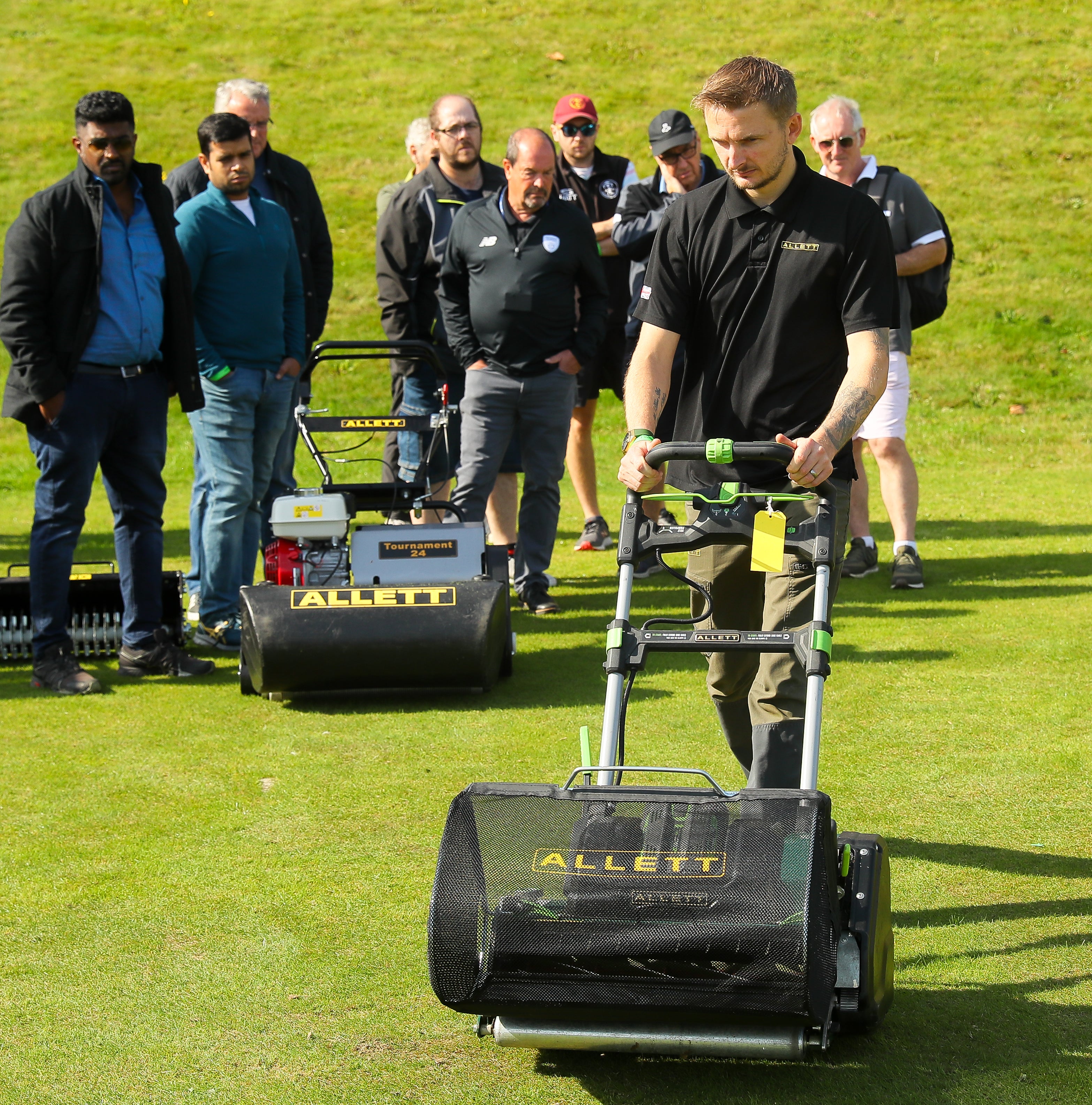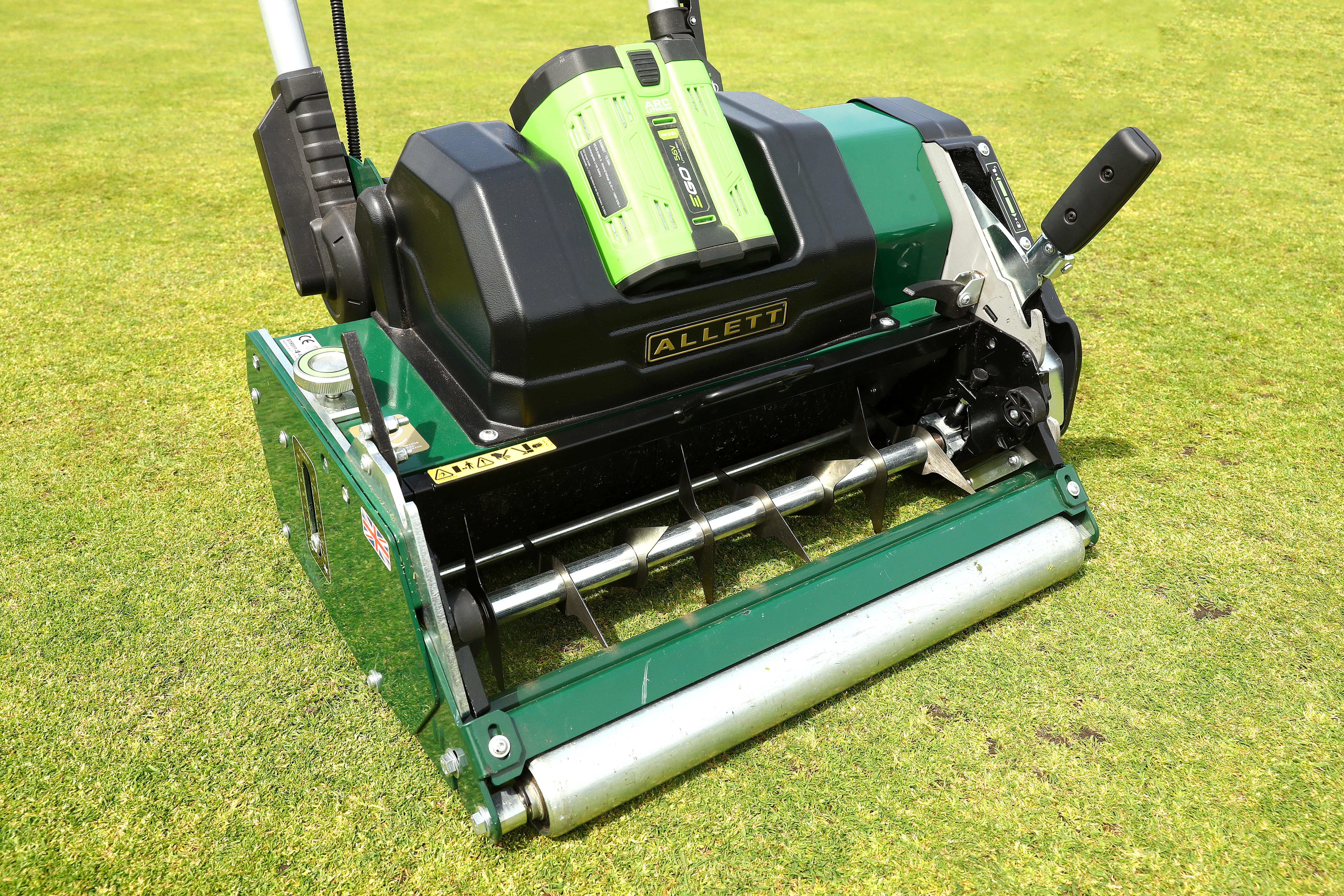As the days grow shorter and the temperature starts to dip October signals a crucial time for lawn care in the UK. With the summer heat fading this month offers an opportunity to prepare your lawn for the winter months while ensuring it stays healthy come spring. Here’s your guide to essential lawn care tasks for October.

1. Mow Your Lawn
Even though the growth rate of grass slows down in October regular mowing is still important. Aim to keep your grass a little bit longer- above 30mm. This height helps prevent disease-cutting too short can stress the grass as temperatures drop.
2. Scarify Your Lawn
Scarifying in October prepares your lawn for the winter months by reducing thatch, allowing better drainage and preventing waterlogging. By removing thatch you improve airflow to the grass roots which is essential for healthy growth and disease prevention. Any fertiliser you apply will then reach the grass roots rather than sitting on top of the thatch layer and being washed away. Scarifying helps stimulate new growth by encouraging the development of lateral shoots and enhancing seed germination when overseeding.
3. Rake Up Leaves
As autumn progresses falling leaves can smother your grass if left unattended. Regularly raking up leaves not only keeps your lawn tidy but also prevents mold and mildew which can thrive under a blanket of debris. You can use your Scarifier cartridge to pick up leaves if it is not too wet to do so! Leaf cover can attract worms which attracts moles- so another reason to clear them from your lawn!
4. Aerate Your Lawn
Aeration is a vital task to improve soil health. By perforating the soil with holes you allow air, water and nutrients to penetrate deeper fostering root growth. If your lawn experiences heavy foot traffic or feels compacted now is the perfect time to aerate. You can use a manual or powered aerator focusing on areas that show signs of compaction.
5. Overseed
If your lawn has bare patches or feels thin consider overseeding in October. Choose a high-quality seed mix suitable for the UK climate- you will need to use the same seed you are already using if you are just overseeding otherwise it will be patchy. This not only helps fill in bare spots but also strengthens your lawn. Don't leave it too late as it is already getting colder overnight!
6. Feed Your Lawn
As the grass prepares for winter a final application of fertiliser is beneficial. Opt for a winter fertiliser that’s high in potassium and low in nitrogen to help strengthen roots and improve cold tolerance. This will give your lawn the nutrients it needs to survive the winter and thrive in the spring.
7. Control Weeds
While weed growth slows in colder months it’s still important to tackle any persistent weeds. Hand-pulling is effective for small infestations or consider using a selective herbicide if necessary. Applying a pre-emergent herbicide can also prevent winter annuals from taking hold.
8. Repair Damage
Take a close look at your lawn for any signs of damage from pests, diseases or wear and tear. Patch up any bare spots with fresh topsoil and grass seed. This proactive approach will help ensure a healthy lawn come springtime.
9. Winter Preparation
Prepare your lawn for winter by ensuring proper drainage. Clear any debris from gutters and drainage ditches to prevent waterlogging. Stay off your lawn if conditions are frosty- this will damage your lawn.




Leave a comment
This site is protected by hCaptcha and the hCaptcha Privacy Policy and Terms of Service apply.